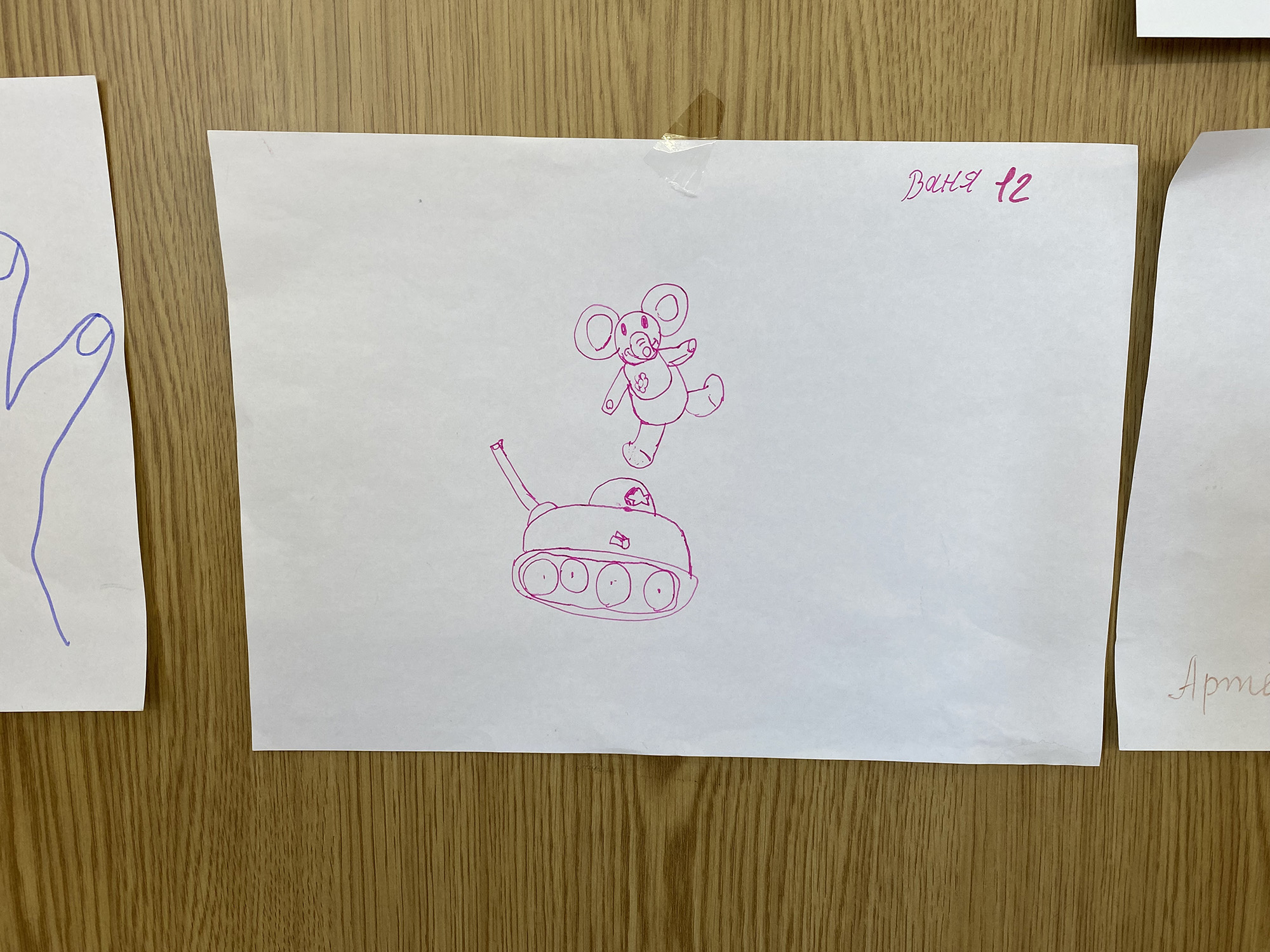The walls of the playroom at the Palanca border crossing between Moldova and Ukraine are covered in children’s drawings. Among the sea of hearts and Ukrainian flags, one picture stands out: an elephant floating above a Russian tank.
Drown with a pink sharpie, the artwork is signed “Vanya, 12.”
“He drew himself as an elephant and said that if he was an elephant, he’d be able to destroy the tank by stepping on it,” said Diana Negru, a psychologist who works at the UNICEF Blue Dot refugee assistance center in Palanca.
Vanya, his mother and two siblings escaped from Kherson, a city in southern Ukraine that has seen heavy fighting since the beginning of the war and is now under Russian control.
When Negru met the family, they were en route to Germany. Vanya’s father stayed behind to fight.
A Russian tank destroyed half of his family’s house and Vanya saw everything. He saw his grandmother die,” Negru told CNN.
Like many children who come through her door, Vanya needed urgent care. He couldn’t breathe, his eyes were moving around and he was very emotional, Negru said.
“Some children are traumatized, they react to any noise. If the door closes, they become scared and aggressive, so we need to calm them down, try to focus their eyes, use breathing techniques to help them,” Negru explained.
The team of psychologists, social workers and therapists have limited time with each family. The Blue Dot provides refugees with information and helps them with their onward journeys, but it’s not an accommodation facility.

At the time of CNN’s visit on Wednesday, a few families were waiting in the center for buses to take them to Germany. A little girl was in the playroom, stacking bricks on a toy truck, attended by a therapist.
A bus with 70 refugees from southern Ukraine was on its way to the border and the workers manning the help point were rushing to prepare meals and make sure the center was ready.
Sometimes, several buses arrive all at once, with hundreds of people needing help at the same time.
“It’s not a full therapy, we may only have 20 minutes with the child, so the aim is to stabilize them and calm them down,” Negru said.
“We just show them they are now at a place where it’s safe.”